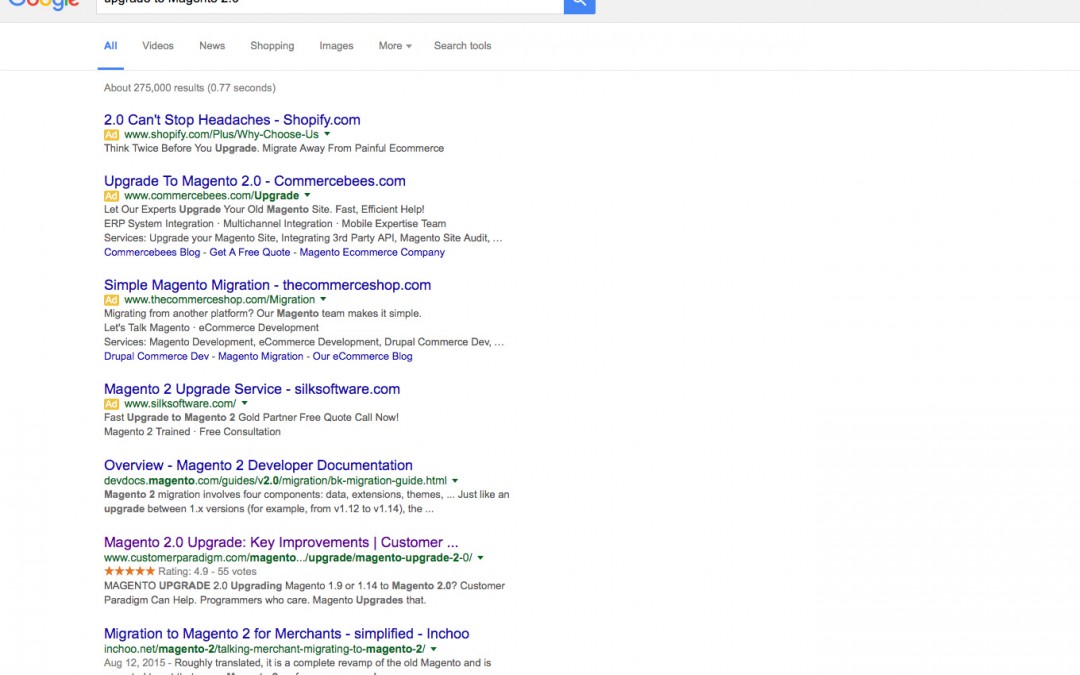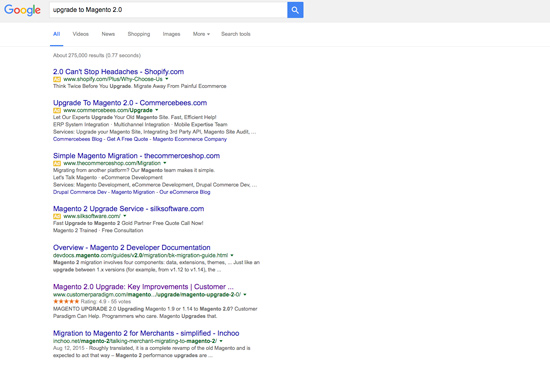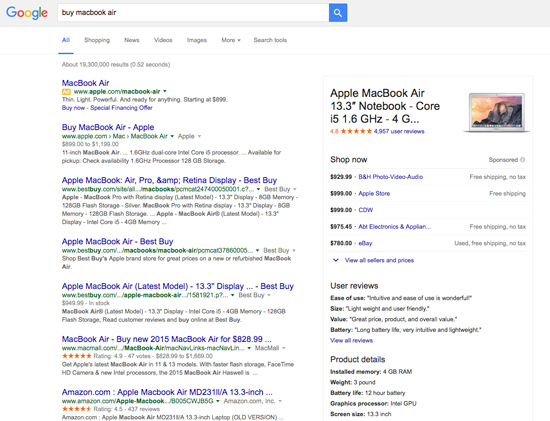Last week, Google made a pretty significant change to how ads are displayed for search results: They removed all of the right-hand ads from desktop search results:
Instead, there are now up to four paid ads at the top of a search result, along with three text ads at the bottom of the page. (It used to be two on top, with an occasional third in a competitive space.)
The spot will be used for product listings or other relevant information for a particular search.
So… how does this change affect Websites that advertise on Google?
It’s complicated, but we’ll likely see three things happen:
1. More competition for the top four spots (i.e. higher cost per click rates)
The total number of text ads that will show up on a search results page will shrink from eleven ads, down to a maximum of seven.
With less ads on a page, there’s even more competition for a top spot.
And with more people battling for the top few spots, you’ll likely see people bidding up the price per click.
This does help Google’s revenue, and I’m sure they’ve done a ton of testing and research. They’ve most likely calculated that this will increase their revenue, but not completely drive away advertisers. As you probably know, Google Adwords is the main source of Google’s $74.5 billion in revenue (last year).
In the past, there were usually only two text ads that were displayed at the top of the page. Now, there can be three or four, but without the right hand side ads, the others are pushed to the bottom of the page (where very few people look or click).
In the past, an ad on the right side of search results might have converted a little bit – especially if you had strong, compelling content.
2. More focus on quality scores for your landing pages
With more competition for the top spot, the only other way to lower your cost per click rate is to improve your site’s quality score.
The reason that Google dominates search marketing is because they don’t just allow the top bidder to have the top spot. Instead, they have created feedback loops that measure the quality of your site and quality of your ad content.
This is all done to create the best possible set of search results (including ads) for the people searching on their site.
So, if your site is highly relevant to the search terms you are trying to advertise, and your page loads quickly, Google will assign your site a higher quality score.
Then, based on your quality score, your actual cost for a pay per click ad may be lower than someone else who has a lower quality score.
In essence, if you have a higher quality score, then you’ll be able to achieve a top spot on the page, and pay less than someone else on a per-click basis.
So, I would imagine that anyone who is serious about PPC will spend even more time focusing on making sure their site has a higher quality score to keep costs in line.
3. More attention to organic SEO
Third, because there are more ads on the top of the page, it’s going to be even more important to have a top search ranking result. If there are four ads, a fourth place listing on Google might be below the proverbial "fold" of the page.
I’d imagine people will see the threat of increased PPC rates, and spend more time on organic SEO work.
The good news: if your site ranks well for organic SEO for a particular keyword term, this should only help your overall quality score for your site.
Summary:
In case you don’t know, I’m a Google Adwords certified person, and Customer Paradigm is a Google certified Agency. I’ve been working with Adwords since 2002 and have served as an expert witness for a Federal trademark case that revolved around Google Adwords.
Let me know if you’d like to discuss your pay per click or organic SEO campaigns. We’re here to help!
Until next time,

Jeff Finkelstein
Founder, Customer Paradigm
303.473.4400



